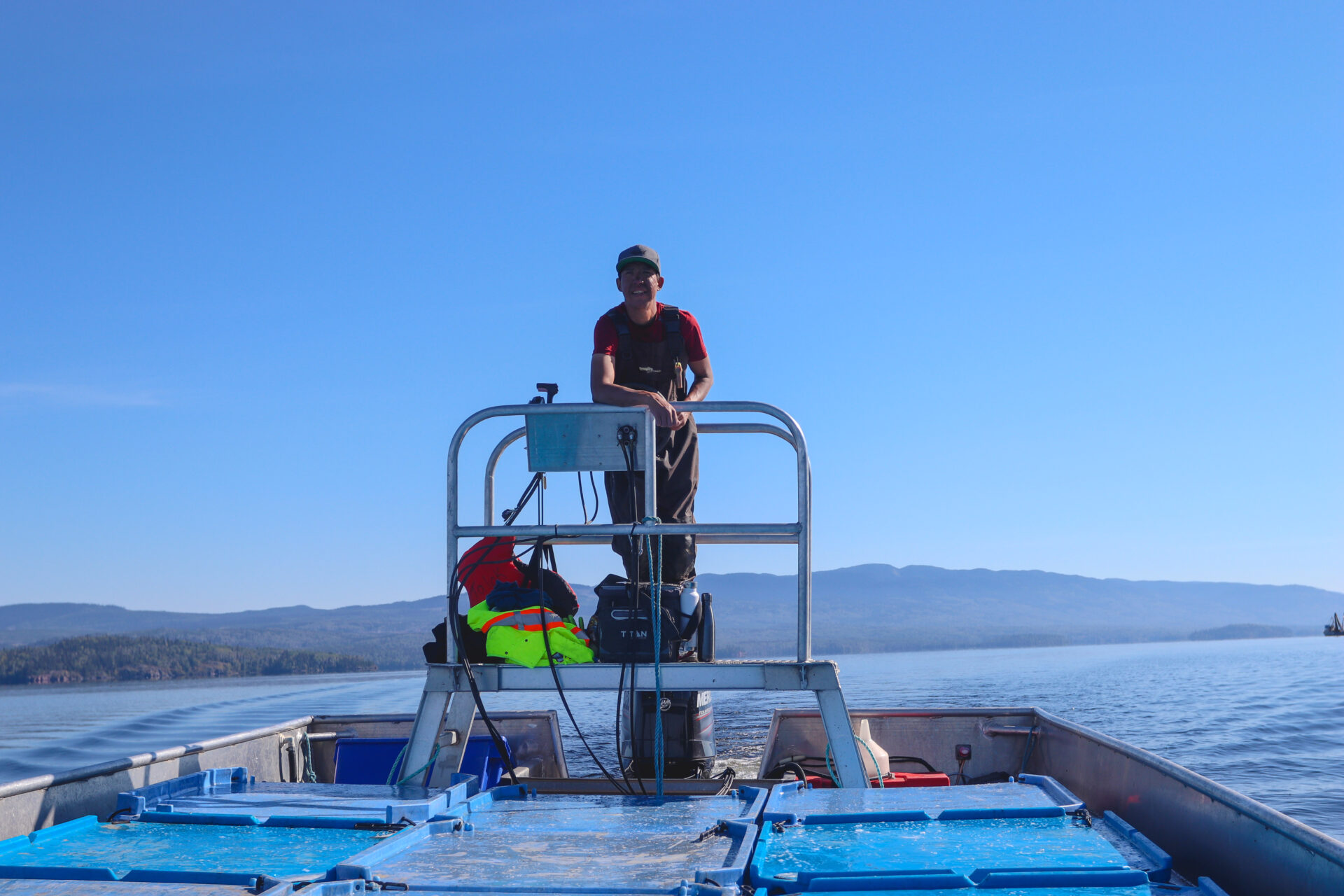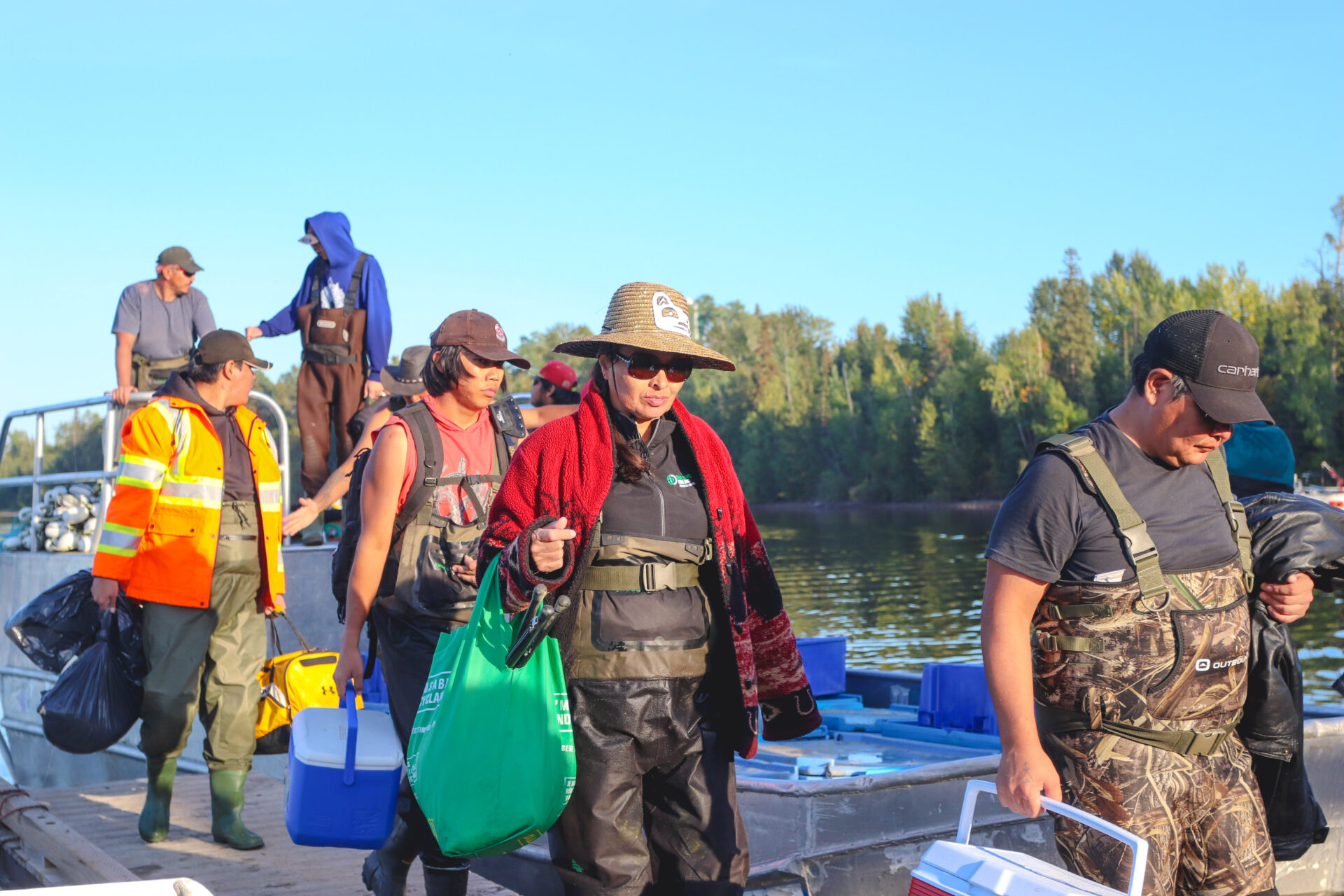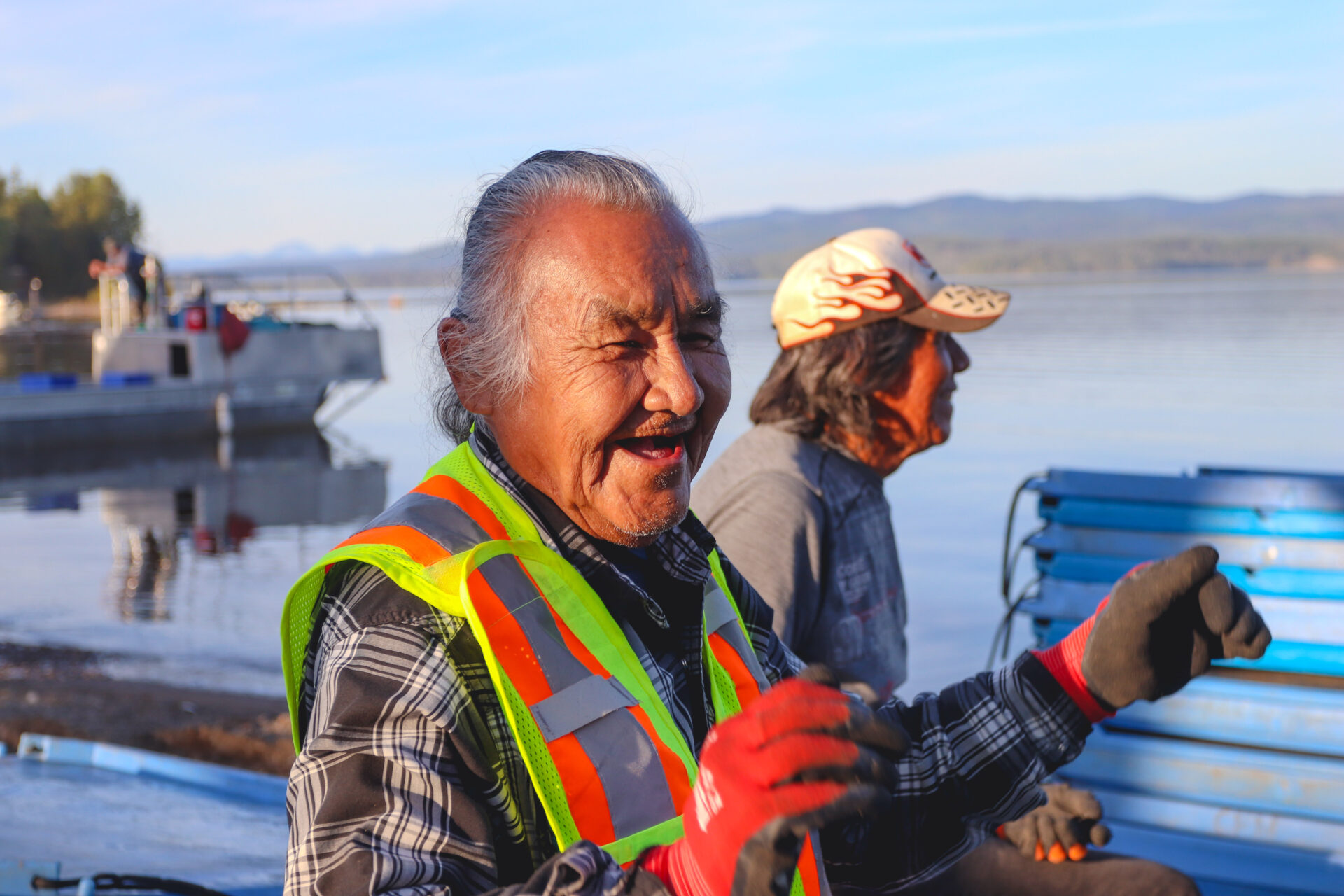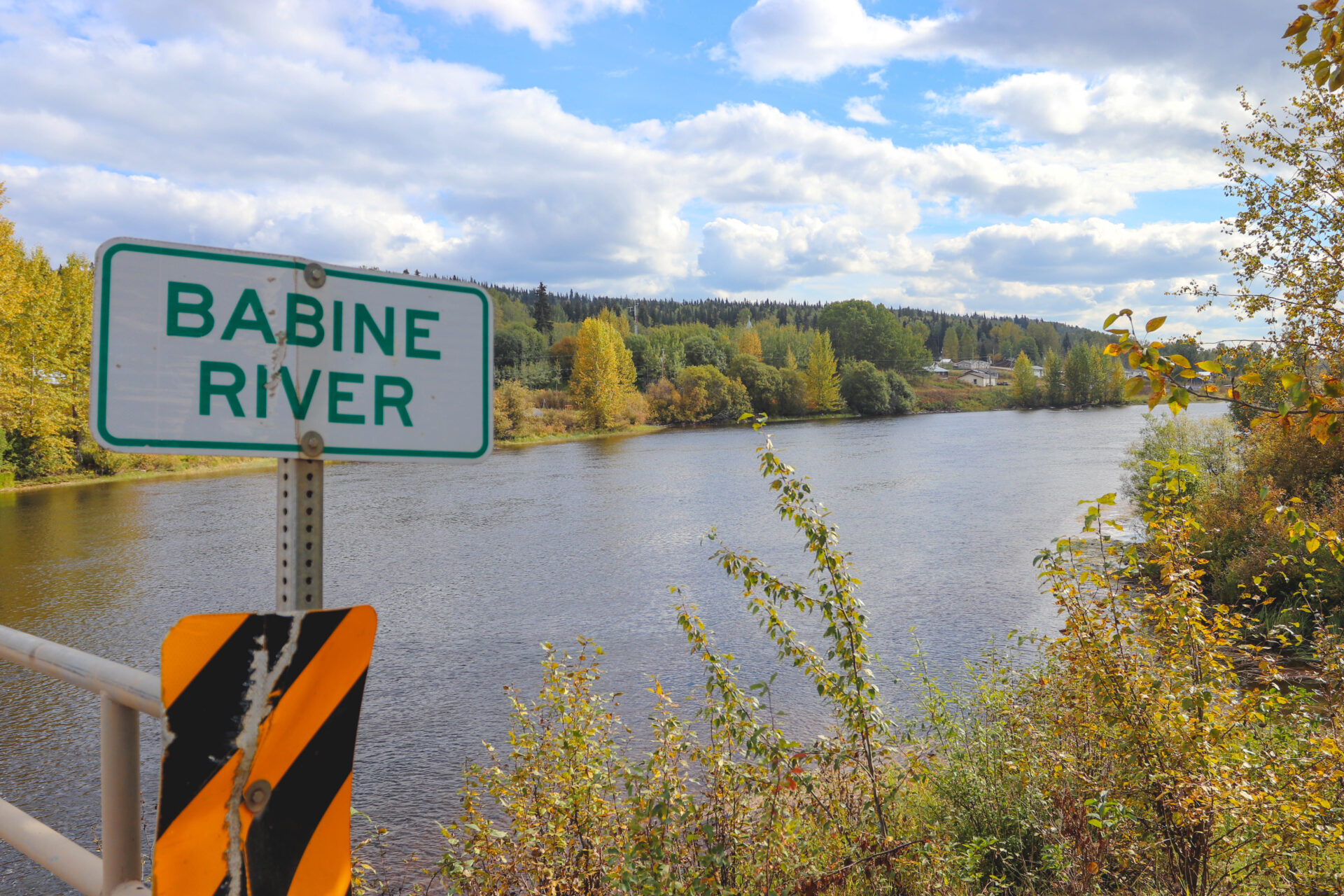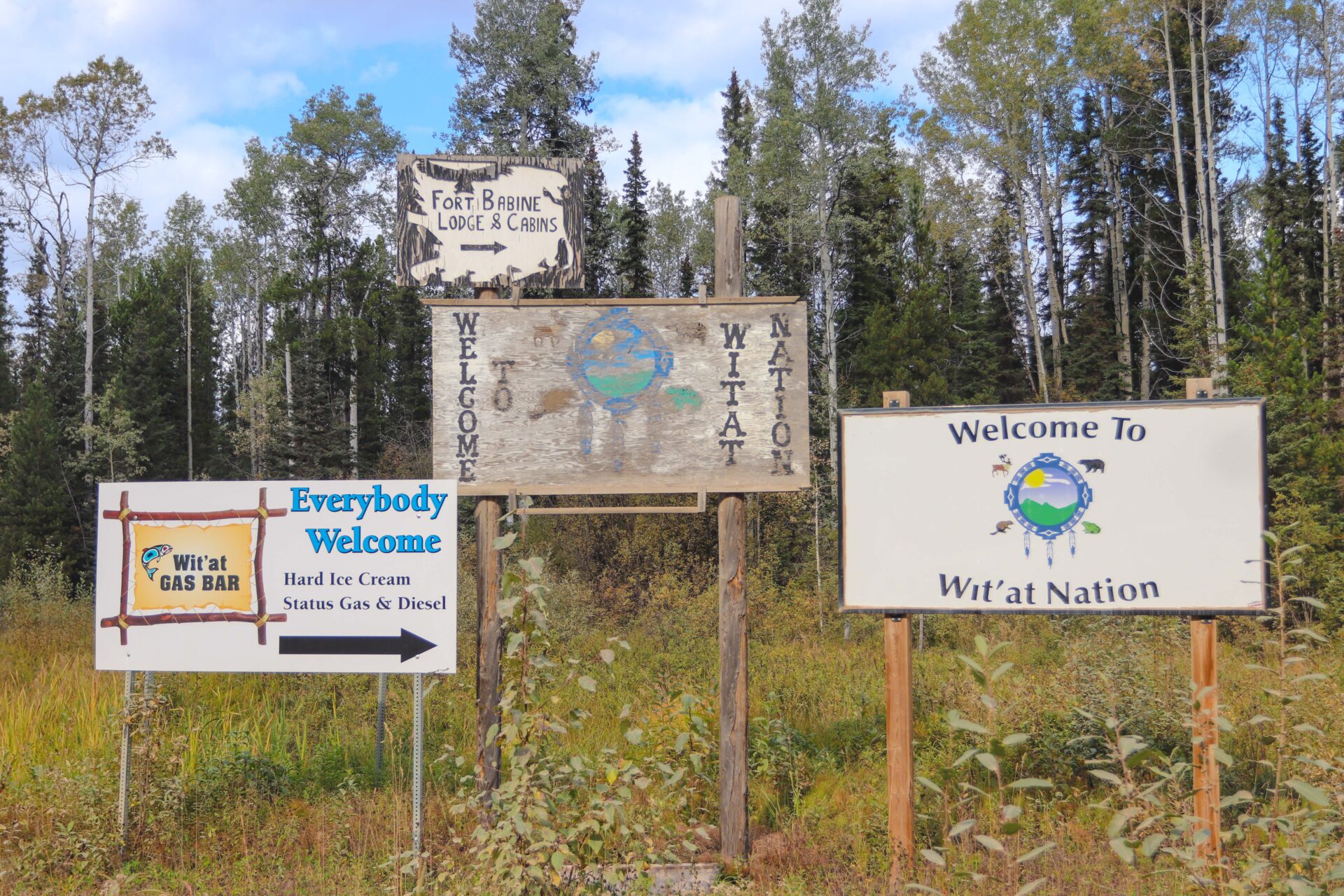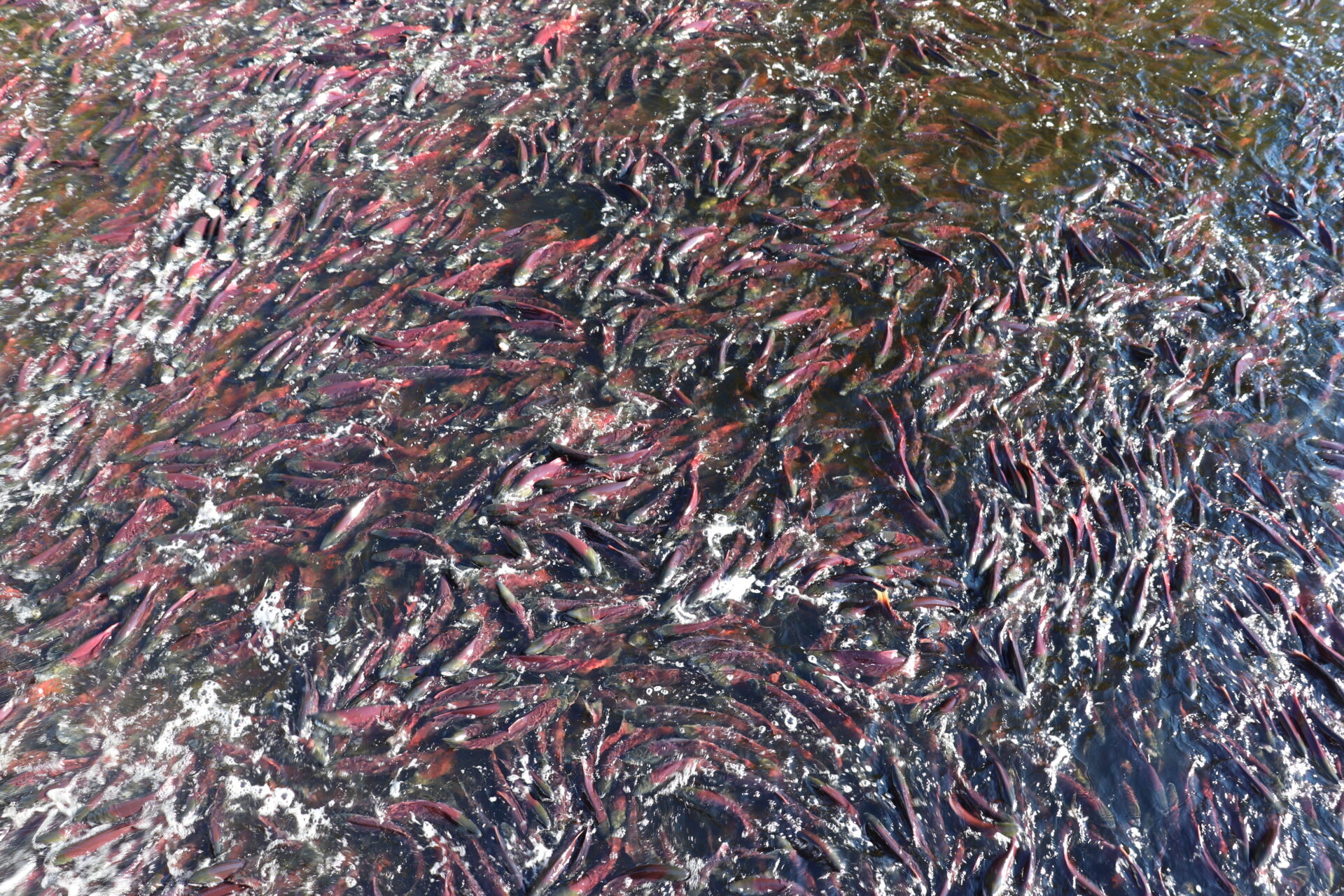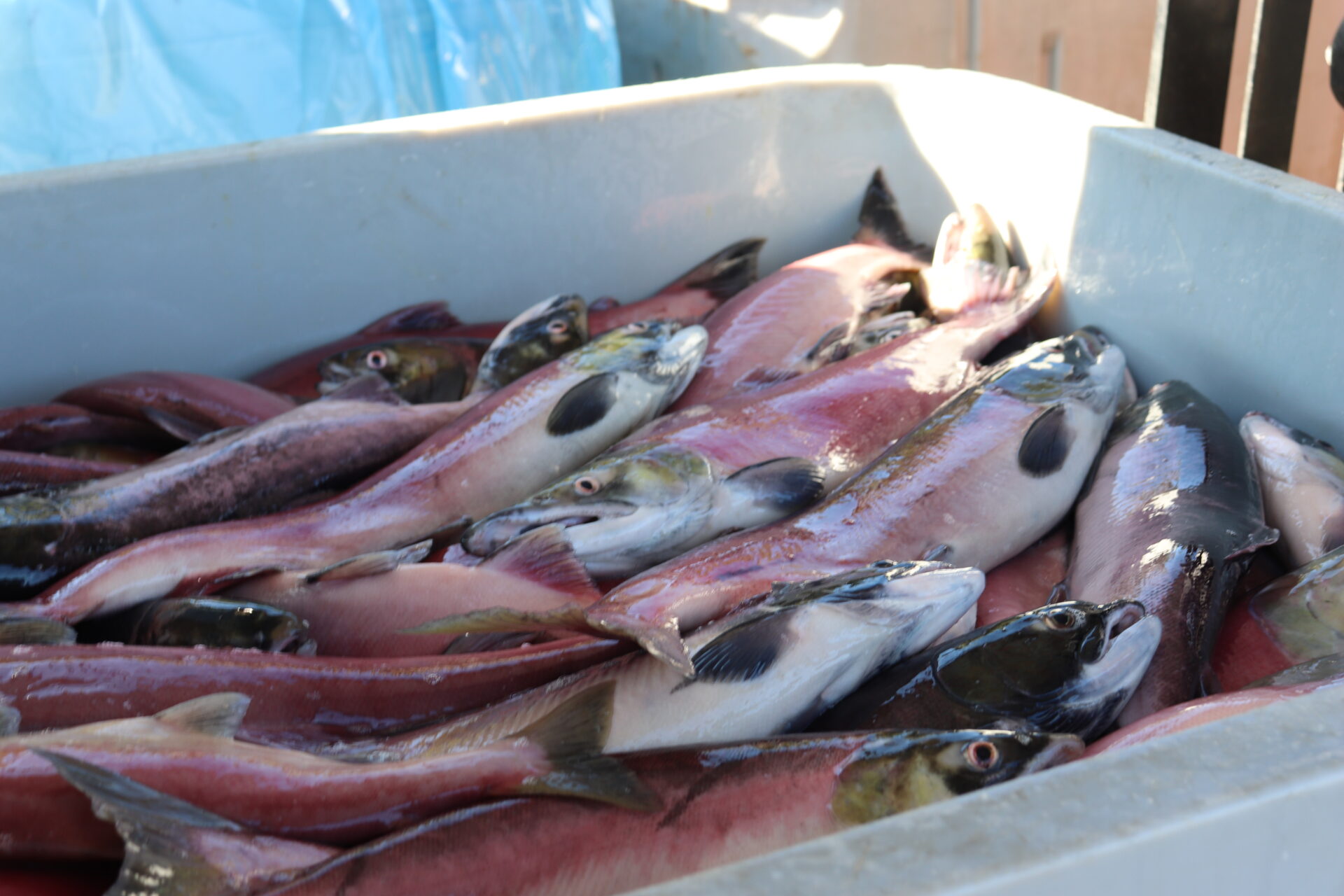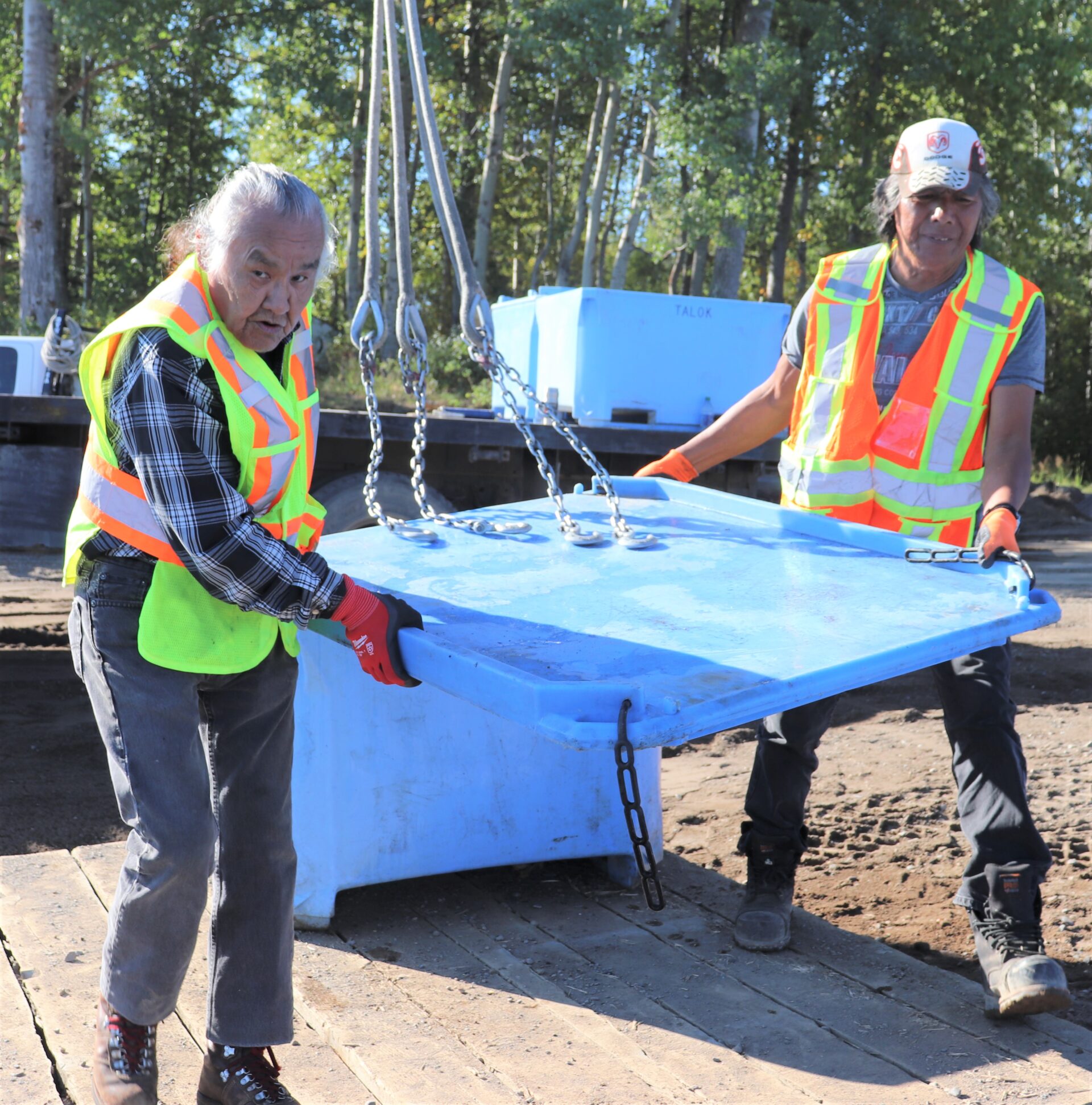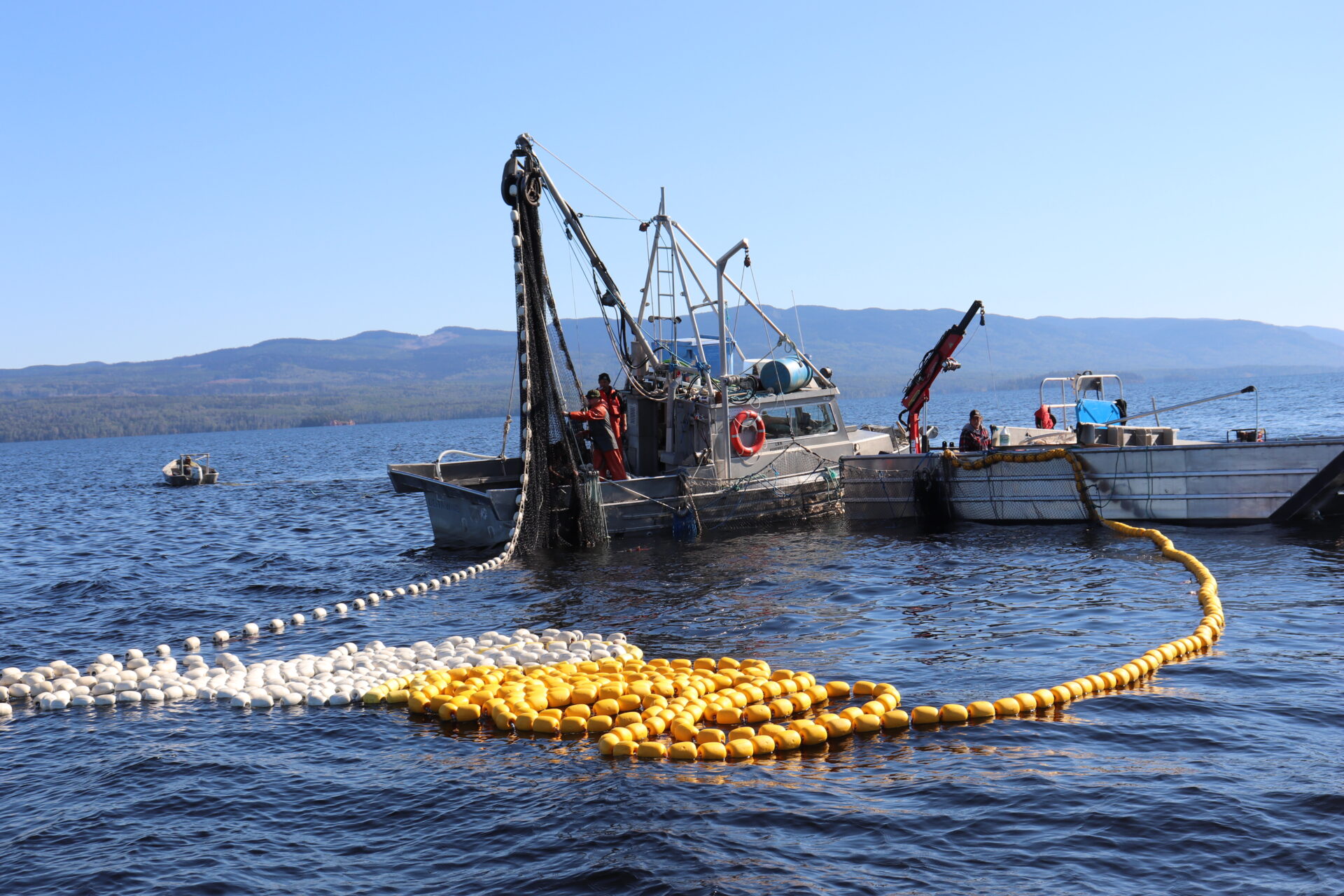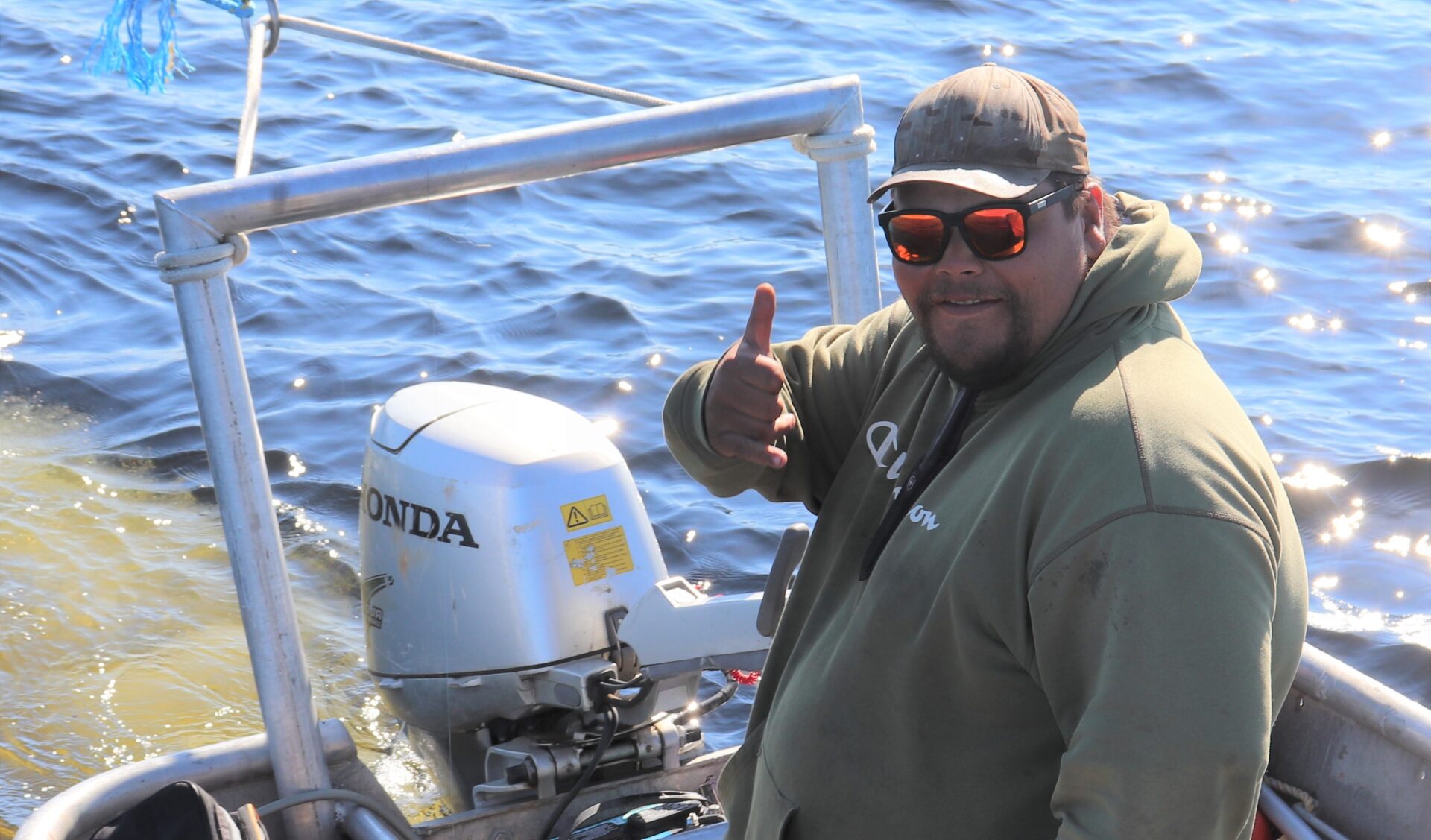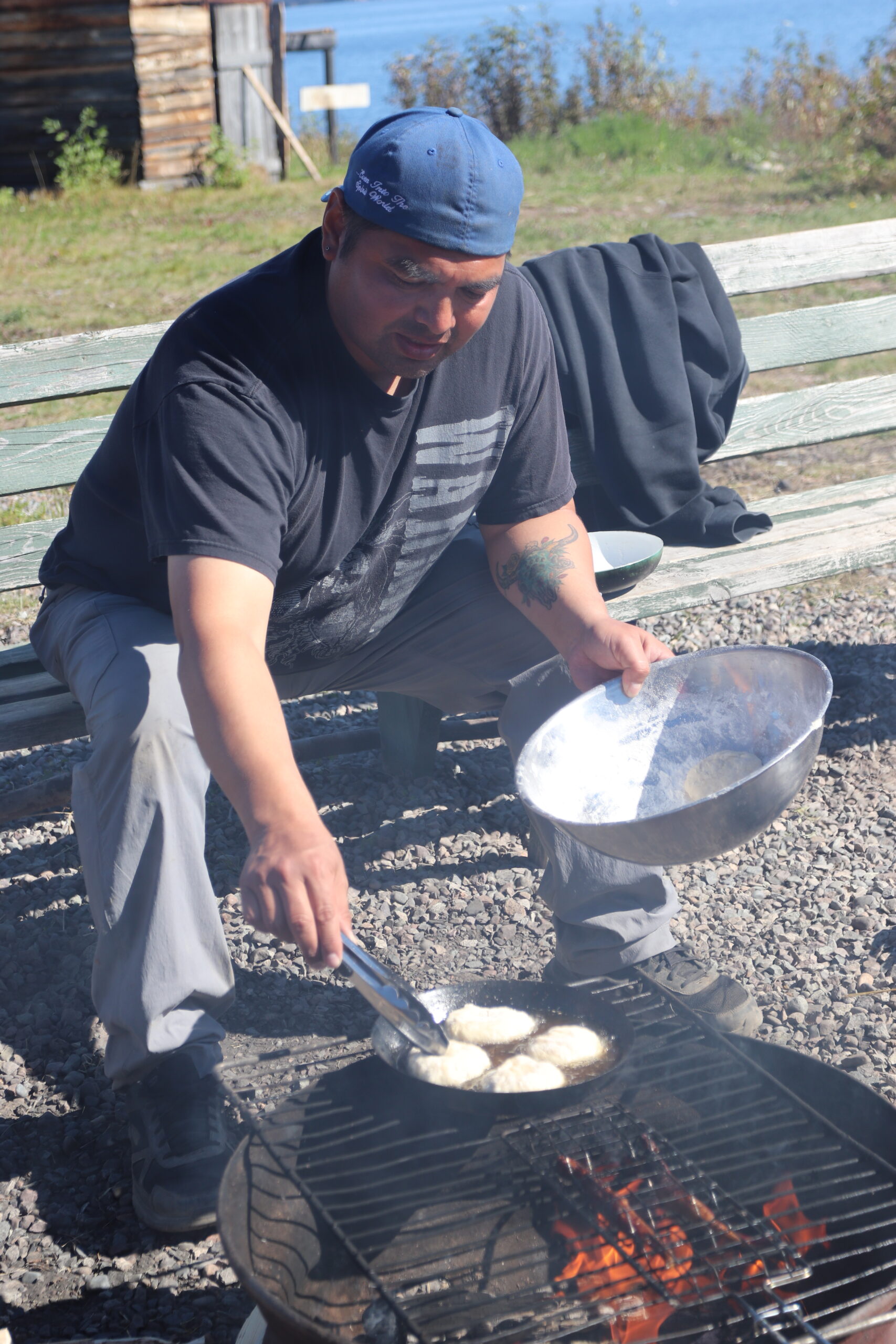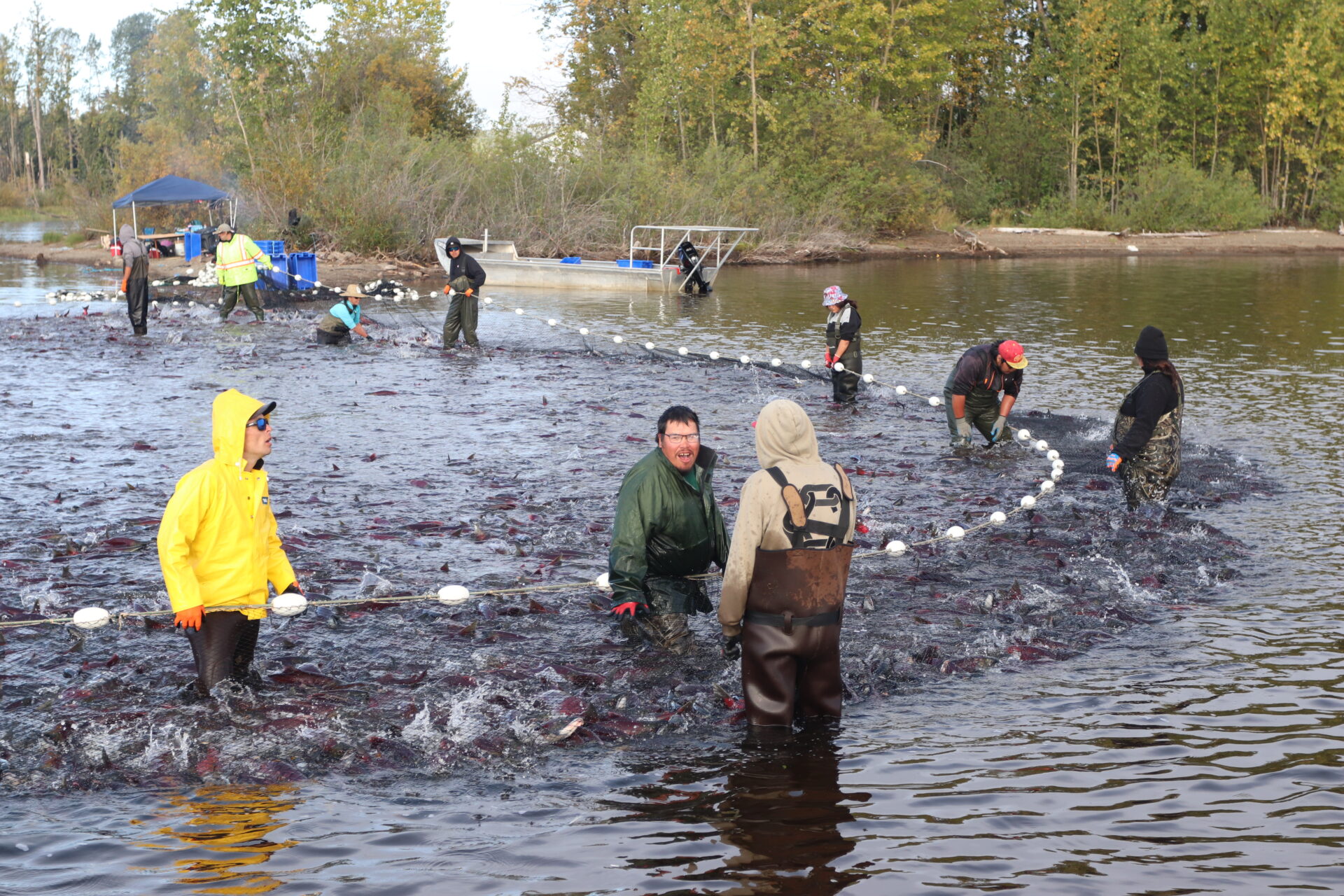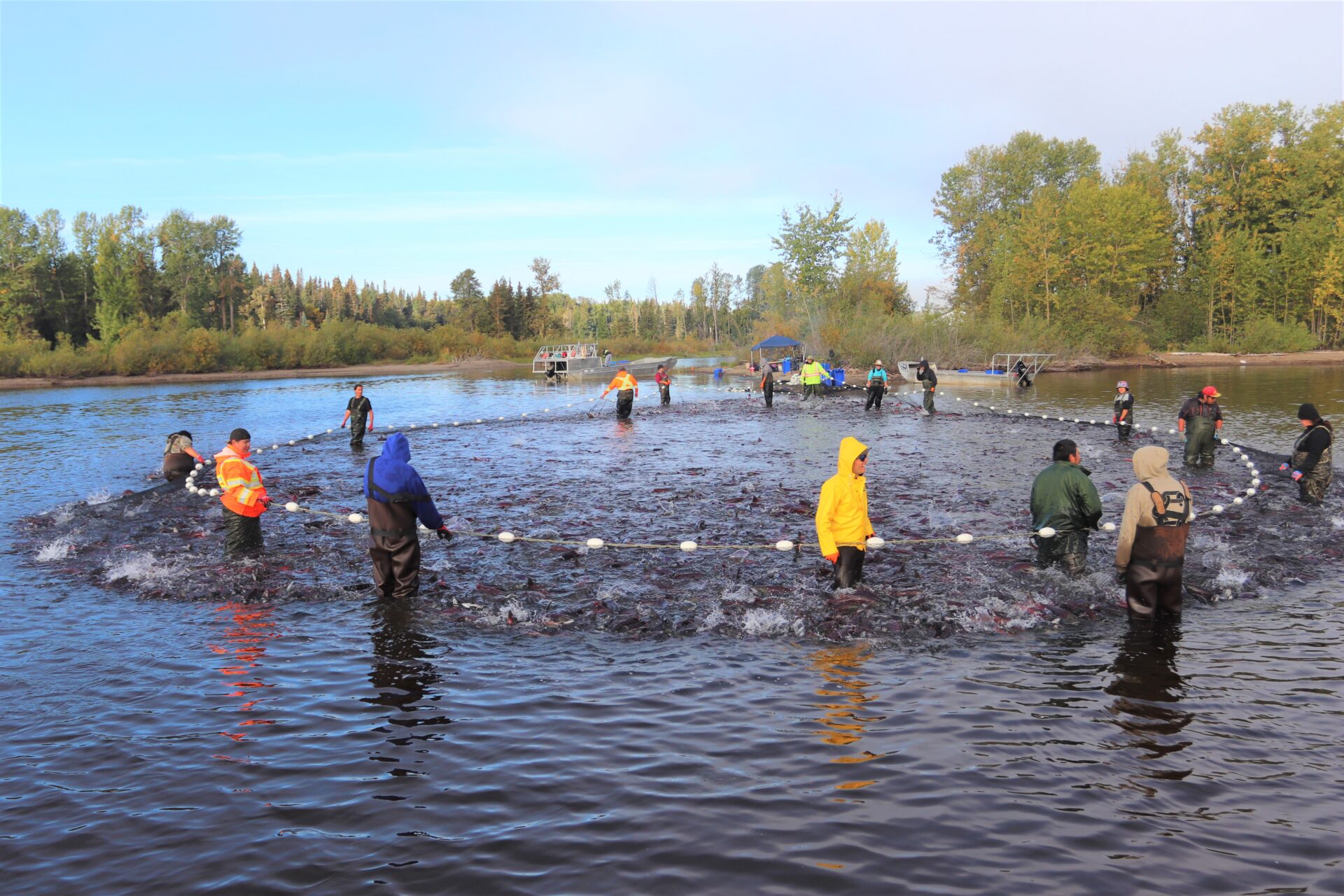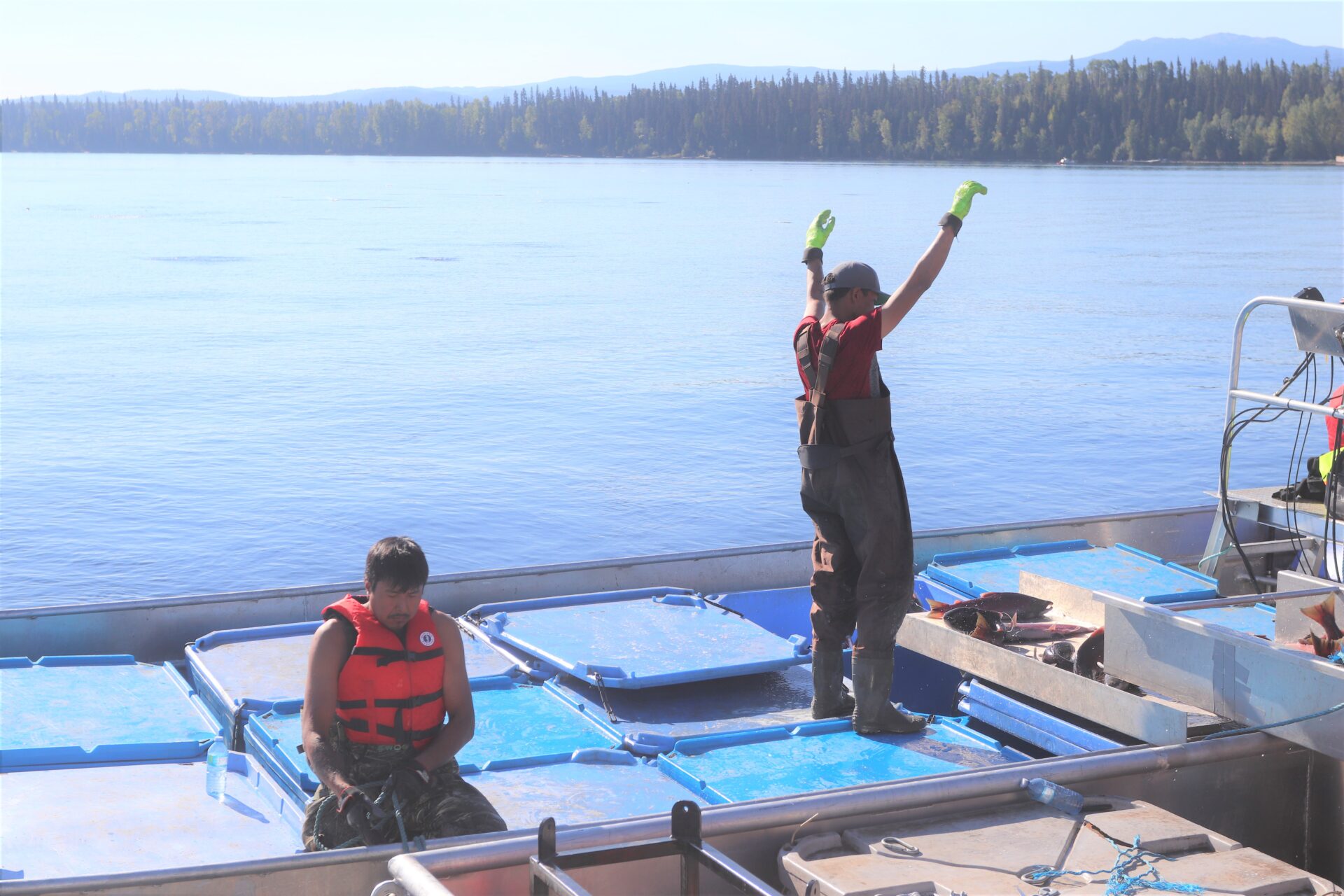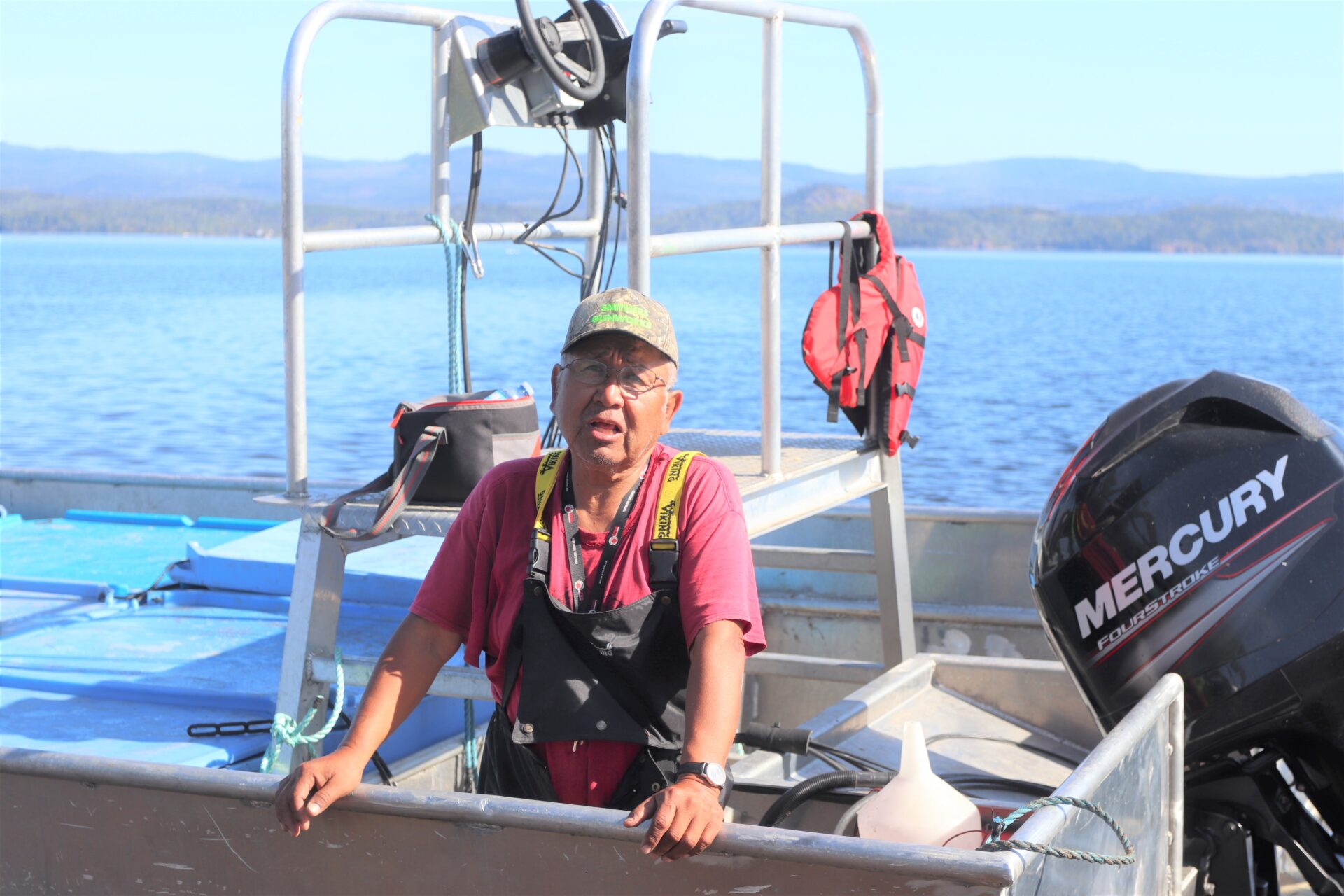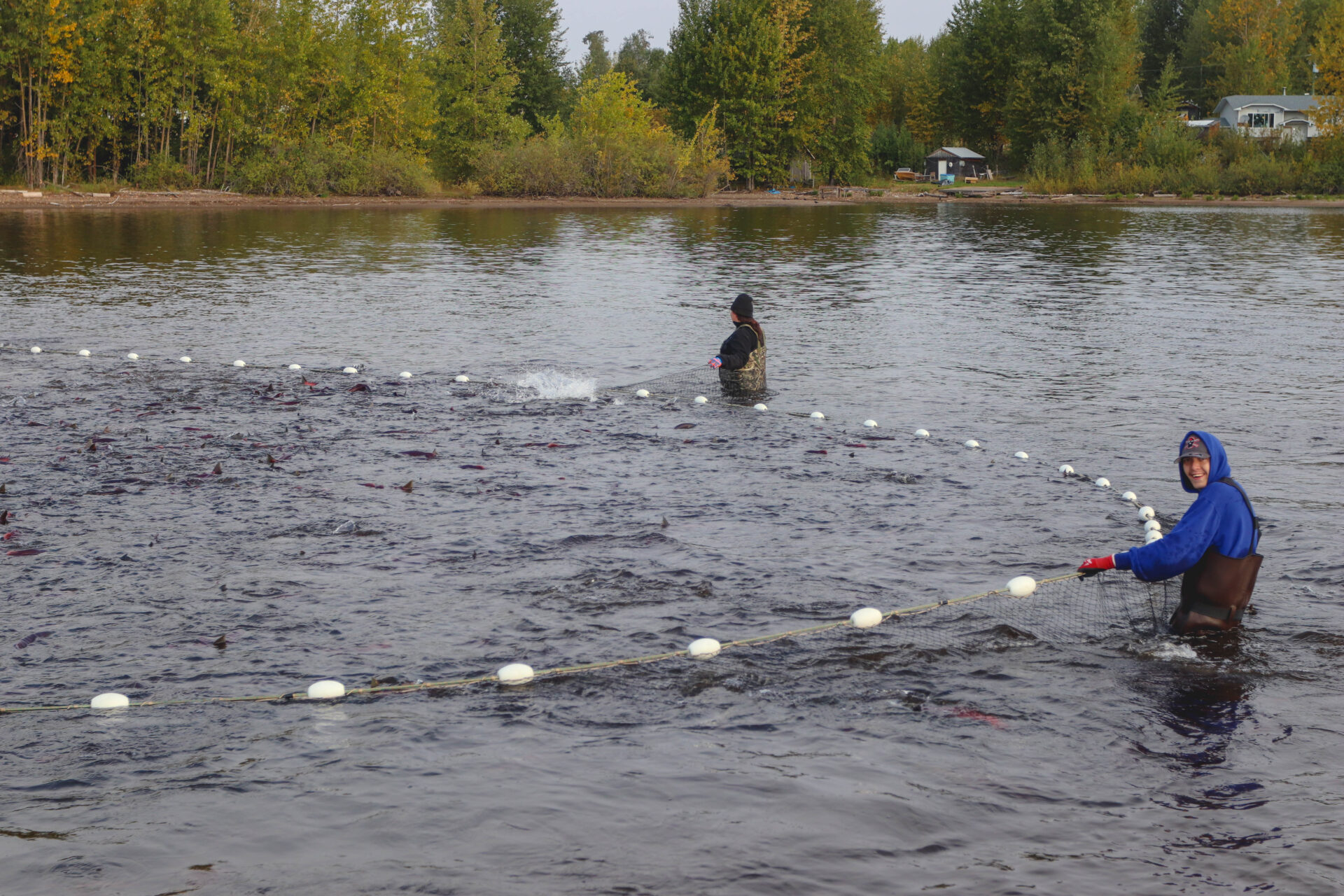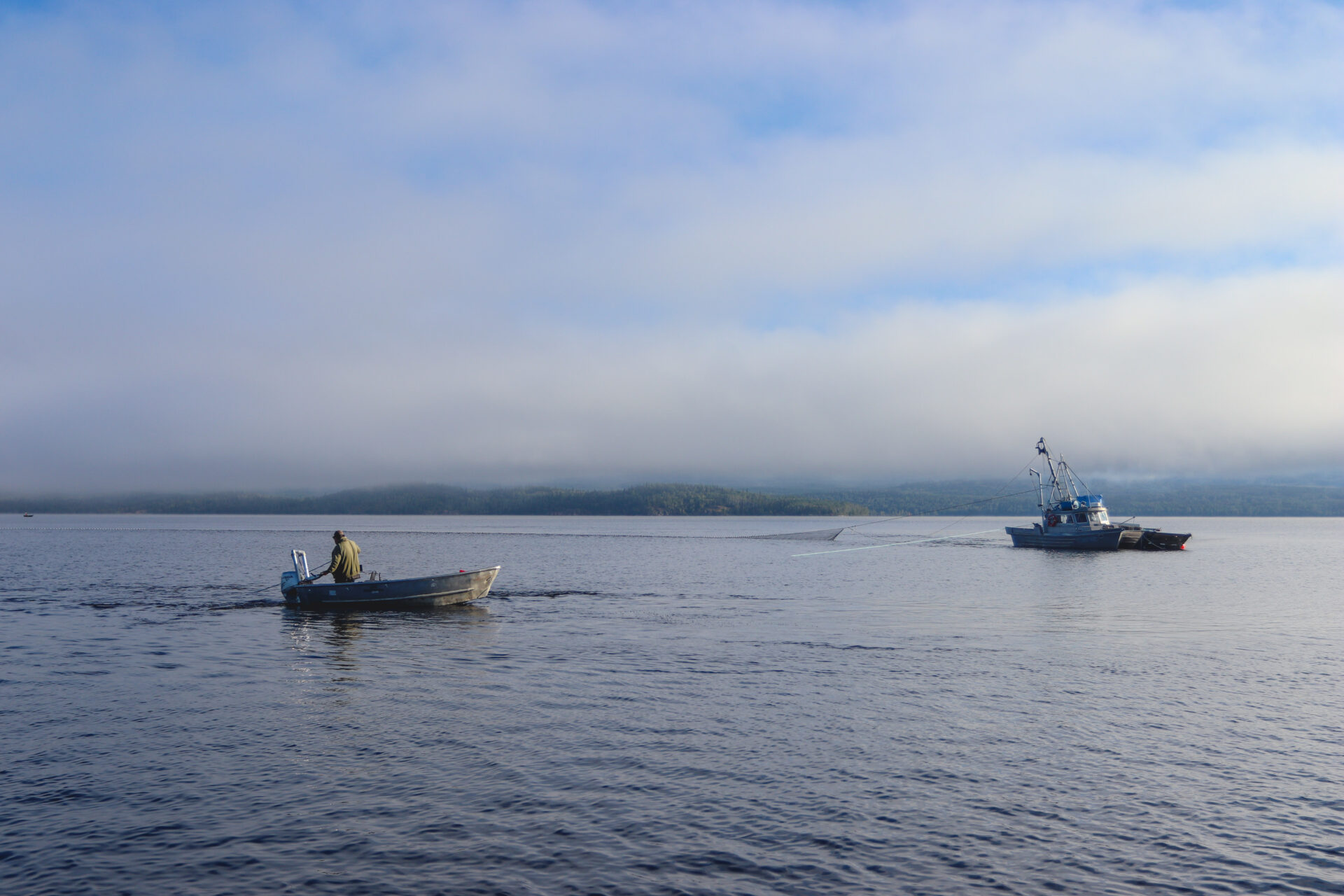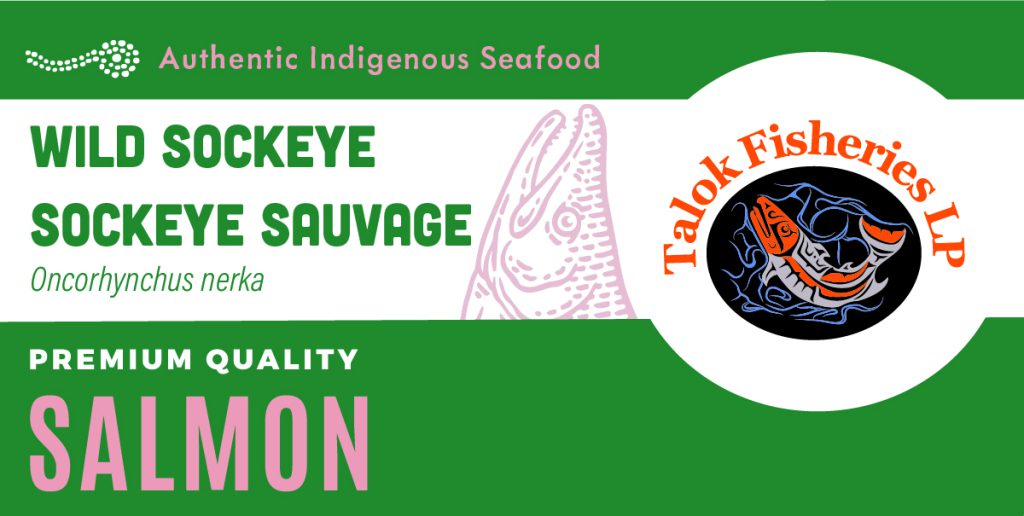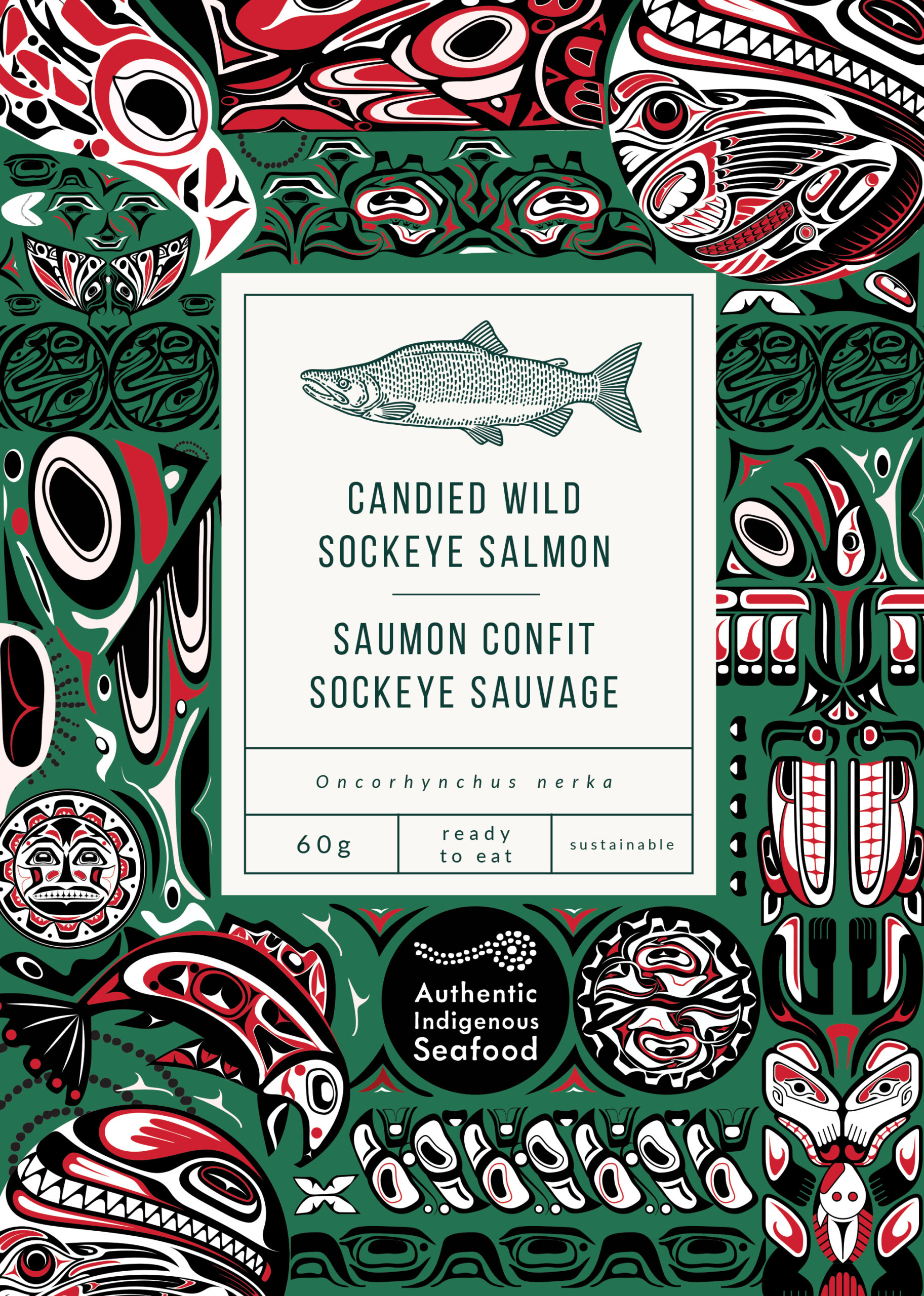Babine Select
Babine Lake is the headwater for Babine River which is one of the Skeena River’s most productive sockeye tributaries and home to at least 3 different sockeye stocks. Lake Babine First Nation has been stewarding and selectively harvesting Babine River sockeye for countless generations.
Historic conflicts with commercial fishing during colonization are being reconciled today with the recognition of unceded fishing rights, restoration of wild sockeye stocks, and development of a modern commercial fishing business called Talok.
Their work has begun to restore lost food and cultural and economic security, but it has not been easy.
Location & Significant Feature
Babine Lake is the longest lake in British Columbia and at the headwaters of the Babine River, Skeena River’s largest tributaries (along with Bulkley-Morice and Kispiox) it supports a cluster of the most productive sockeye populations in the Skeena basin that in turn support downstream commercial, recreational and numerous Indigenous fisheries.
When abundance permits, sockeye fisheries are undertaken as stocks pass through Lake Babine First Nation’s territories, typically available from July through August.
Lake Babine First Nation is comprised of 5 communities. Three year-round communities include Fort Babine at the northern tip of Babine Lake, Tachet on the west-bank mid-lake near the mouth of Fulton River, and Woyenne located in Burns Lake.
More remote seasonal communities are populated during peak fishing, hunting, and gathering seasons at Old Fort near Granisle located just north of Tachet, and Donald’s Landing, adjacent to the mouth of Pinkut River on the southwest corner of Babine Lake about 40km from the community of Burns Lake.
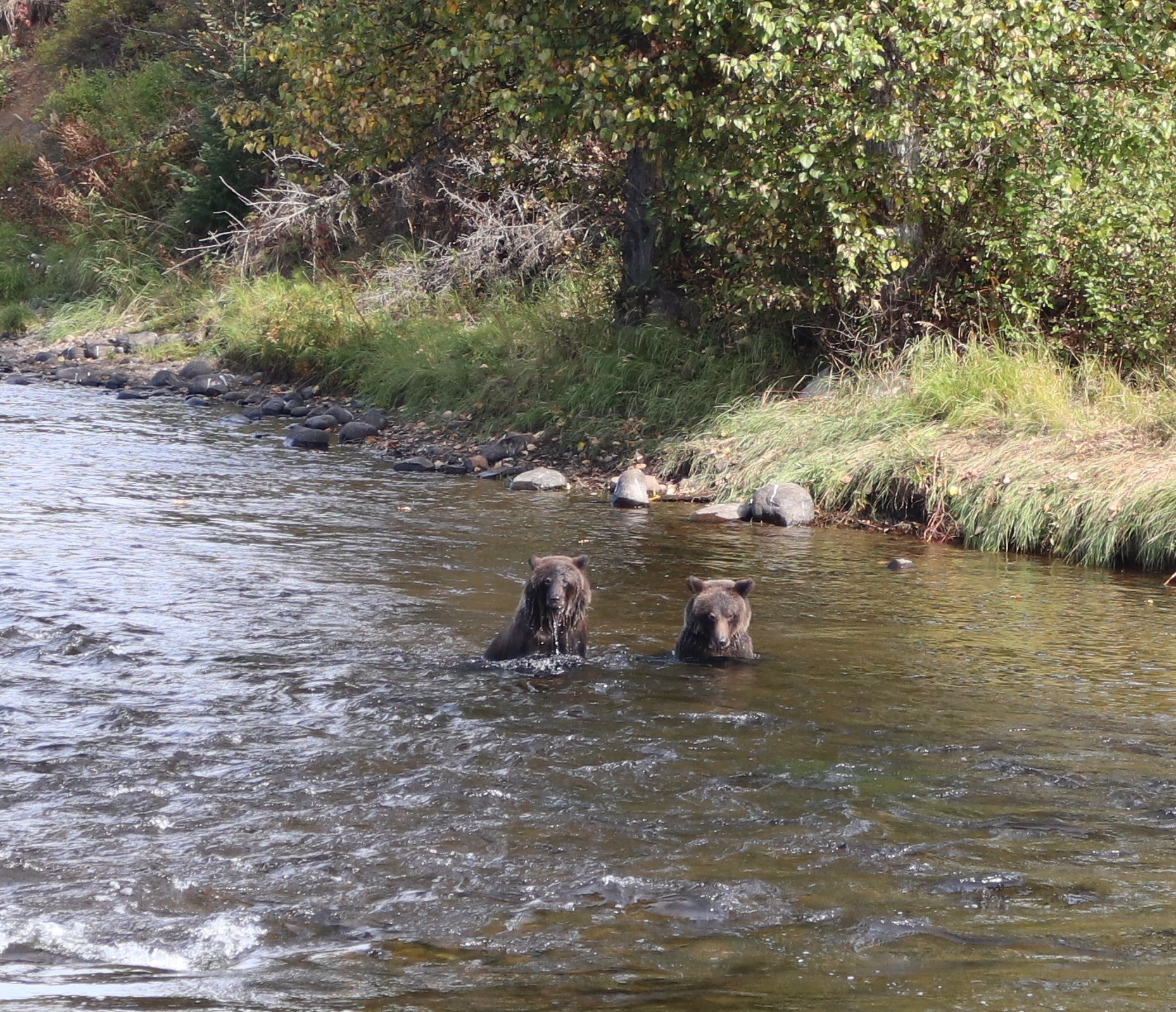
Babine River currently produced about 90 percent of the Skeena River’s sockeye runs, largely credited to DFO’s Pinkut Creek and Fulton River spawning channels that were built in the 1960s off tributaries of Babine Lake.
The spawning channels successfully enhance limited spawning habitats in Babine River, but unwittingly created a large mixed-stock fishery downstream that managers believe led to the over-fishing of co-migrating wild Babine sockeye.
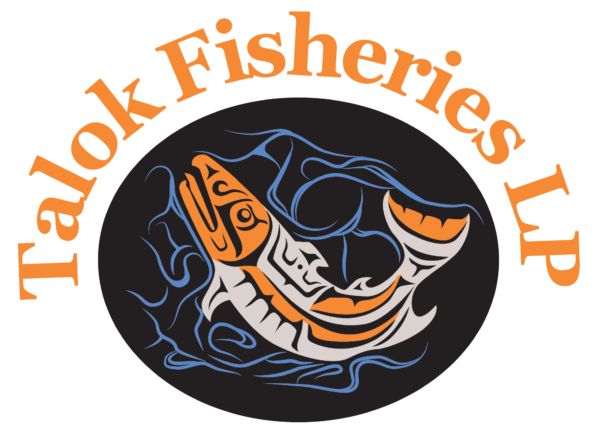
Mission
Lake Babine Nation’s (LBN) vision for fisheries is for a healthy, abundant, and sustainable fish population in the Lake Babine Territory, including wild salmon.
LBN will manage its fishing according to its own laws and customs. This will ensure sufficient healthy stocks to meet LBN’s harvest needs and provide commercial fishing opportunities as well.

Traditions
Fort Babine’s traditional Babine name is “Wit’at,” which is an abbreviated form of “Wit’ane Keh,” meaning “place of making dry fish.” A smoke-dried sockeye product produced locally is a highly valued favorite year-round they call “Beh”.
History
Lake Babine Nation’s historic harvest of sockeye is estimated to be upwards of 750,000 annually, which made them “salmon People”, independent and prospering from the food and trade associated with Lake Babine’s abundant sockeye fishery. However, conflict with downstream commercial fishing interests in the early 1900s changed that.
According to Lake Babine First Nation: “Lake Babine People were very independent since the fish weirs were still in use. Then, the Department of Fisheries and the Commercial fisheries of BC closed the fish weirs. Two Hereditary Chiefs, Gwist’a’ (Big George) & De Wis Sum Ts’ik (Jack Williams) traveled to Ottawa and successfully negotiated the Babine Barricade Treaty, which has never been fulfilled by the Government of Canada to this day. Lake Babine History – Lake Babine Nation.
After nearly starving the winter before due to the rotten nets that the fisheries officers had supplied, the Babine people rebuilt the weir in the summer of 1906. Late in August fisheries guardians came up the river to try and destroy the barricade. When they tried to take the barricade apart the Babine women defended it. They knocked two fisheries officers over in the river and sat on them. The report said that the women hit two of the officers with clubs to protect the barricade.
In response to this resistance, the fisheries officers sent back a report that claimed the Babine were in an uprising and requested that the militia be sent to put them down. The Oblates of Mary Immaculate missionary, Father Coccola talked to the Babine, and at his urging nine Babine men surrendered and were jailed in September. Meanwhile, Father Coccola was talking to the federal government to get them to negotiate with the Babine over the barricade dispute. The government agreed and two chiefs, Chief Tszak Williams and Chief Big George, with the help of Father Coccola, negotiated the Barricade Treaty. The treaty had the Babine remove the weirs, but the government had to supply nets, farm equipment, a school, and several other services in exchange for the Babine taking down the weirs.” The Barricades are Protected and the Treaty is Made, 1906 – Timeline – History & Culture – Lake Babine Nation Treaty Office (lbntreaty.com)

Modern Fishery
Talok Fisheries LP is an indigenous commercial fishing company owned by Lake Babine Nation in north-central B.C. and a Provincially Licensed Fish Receiver pursuant to the BC Fish and Seafood Act. Modern commercial fisheries occur on Babine River’s fence and with purse seines on Babine Lake near Fulton River and Pinkut Creek.

A modern landing site for their Babine Lake fisheries built-in 2016 is set up in the community of Tachet and features a small dock, and covered sort yard for icing, sorting, and toting the catch for shipment. The fishery utilizes a combination of fence traps, commercial-style purse seine boats, and hand-pulled beach seines.
In the spirit of reconciliation, Lake Babine Nation works with DFO, seafood producers, and other First Nations to rebuild a fishery taken from them in 1906. By re-establishing the fisheries their elders and ancestors managed for thousands of years, Talok selectively harvests healthy salmon populations while generating economic and community benefits for their people and their region.
Fishing begins from fence traps at the outlet of Babine Lake and then moves to fish grounds that are adjacent to the spawning channels, to target the enhanced stocks while allowing less-abundant wild stocks to recover and sustain the wild stock diversity that makes these populations strong.

About Our Logo
Talok is a Carrier word for sockeye and the logo is an artistic rendering of sockeye from the perspective of a community artist.
The bi-colored body and markings are inspired by the range of colors exhibited by maturing fish as they move through their fishing grounds. The network of blue background lines reflects the diversity of river and stream habitats that make this region so productive for salmon.
